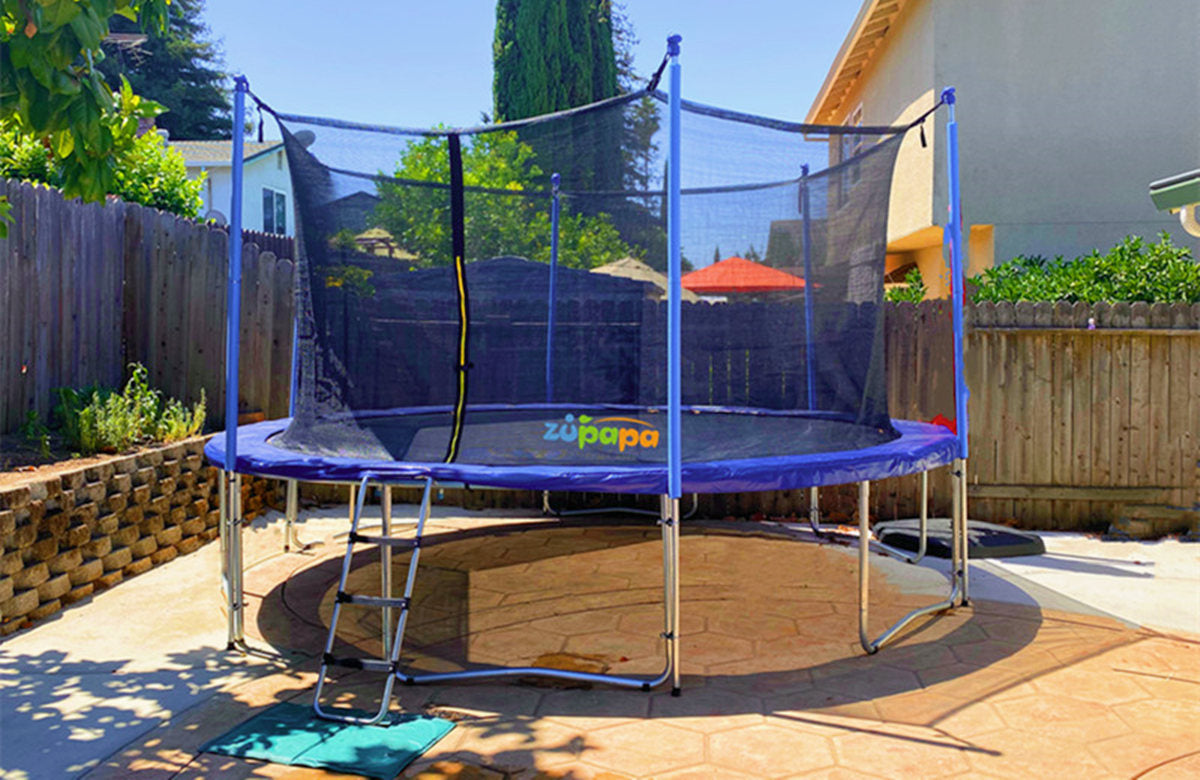Today, let’s take a look at something interesting about trampoline introduced in Wikipedia, especially the popular trampoline.
The First Modern Trampoline
In 1936, George Nissen and Larry Griswold built the first modern trampoline. Nissen was a gymnastics and diving competitor, and Griswold was a tumbler on the gymnastics team. They observed trapeze artists using a tension net to add entertainment value to their performance, and experimented by stretching a piece of canvas in which they inserted grommets into angle iron frames on both sides through coiled springs. It was originally used to train tumblers, but it soon became popular in its own right. Nissen explained that the name comes from the Spanish trampolín, which means the diving board. In the late 1930s, Nissen heard the word during a demonstration trip in Mexico and decided to use an anglicized form as the trademark for the apparatus. In 1942, Griswold and Nissen created Griswold-Nissen Trampoline and Tumbling Company and began the commercial production of trampoline in Rapids, Iowa.

1968 Demonstration of Spaceball
At the beginning of its development, Nissen anticipated that trampoline would be used in a number of recreational areas, including those with more than one participant on the same trampoline. One such game was Spaceball — a game of two teams of two on a single trampoline with specially constructed end “walls” and a middle “wall” through which a ball could be propelled to hit a target on the other side’s end wall.
Types of Trampoline
Competitive trampolines
Competitive trampolines have a steel frame that can be folded up and transported to the playing field. The trampoline bed is rectangular 4.28 by 2.14 metres (14 ft 1 in × 7 ft 0 in) in size fitted into the 5.05 by 2.91 metres (17 ft × 10 ft) frame[9] with around 110 steel springs (the actual number may vary by manufacturer). The bed is made of a sturdy fabric, although it has no elasticity of its own; the elasticity is provided only by the springs. This fabric can be woven with webbing, which is the most commonly used material.

Recreational trampolines
Recreational trampolines for individual use are not as sturdy in construction as competitive trampolines and have relatively weaker springs. They may be in a variety of shapes, though most are round, octagonal, or rectangular. The fabric is usually waterproof canvas or woven polypropylene material. As with competitive trampolines, recreational trampolines often use coiled steel springs to provide the rebounding force, but spring-free trampolines also exist.
Mini trampoline
A mini trampoline (also known as a rebounder, trampette, jogging trampoline, or exercise trampoline) is a type of trampoline less than 1 metre (3 ft 3 in) in diameter and about 30 centimetres (12 in) off the ground. It is usually placed indoors as a part of keeping fitness. The rebounding force provides a form of exercise with less impact both on the knees and joints. Mini trampolines do not bounce as high as large recreational or competitive trampolines. For adults, it is an apparatus for daily exercise. For children, it is a small playground at home.

Commercial Trampoline Parks for Children and Adults
In 1959 and 1960, outdoor commercial “jump centers” or “trampoline parks” where people could enjoy recreational trampolines became very popular in many parts of North America. In the early 21st century, indoor commercial trampoline parks made a comeback, with many franchises in the United States and Canada. ABC News reported that in 2014, there were at least 345 trampoline parks operating in the United States. Similar parks also recently opened in other countries at that time. The International Association of Trampoline Parks (IATP) estimated that the number of parks had increased from 35-40 parks in 2011 to around 280 in 2014. The next year, IATP estimated that 345 parks would be open by the end of 2014 and 115 parks would be open in North America by the end of 2015. IATP also estimated that there would be 40 parks outside of North America by the end of 2014 and at least 100 indoor trampoline parks open internationally by the end of 2015.

As of March 2019, CircurTrix (and its subsidiary Sky Zone) is the largest trampoline park operator in the United States and around the world, with 319 parks operating under its brand. These commercial parks are located indoors and have wall-to-wall trampolines to prevent people from falling off the trampoline onto hard surfaces, as well as padded or spring walls to protect people from impact injuries.
Trampoline Safety Net Enclosure
A trampoline safety net enclosure is a trampoline accessory that significantly reduces the chance of fall off and frame impact injuries.The first commercially successful trampoline safety net enclosure was invented and patented by Mark Provoff in the U.S.. By 2006, 80% of trampoline sales included safety net enclosures. The first trampoline sold by Zupapa was a children's trampoline with a safety net. All this is no coincidence, and there is no trampoline that pays more attention to safety than Zupapa.

While trampolines are safest when only one person is jumping at a time, in practice, the fun of multiple people jumping at the same time means that this advice is often ignored. The benefit of the enclosure is that it prevents the jumper from falling off the trampoline or impacting the frame.
Enclosures for safety nets vary from manufacturer to another, such as openings in the net so that jumper may able to can enter and exit the trampoline. Designs for such openings may include: snap/velcro systems, zippers, or overlapping sections. Snap, zipper and Velcro systems require the entering person to open and close the entrance to prevent misuse, while overlap systems avoid this requirement as a passive solution.
Unexpectedly, there are so many development history and unknown knowledge behind a small trampoline. It’s the truth that life is full of surprises. Trampoline is also worth learning. Do you enjoy this “Eureka” moment, too?





